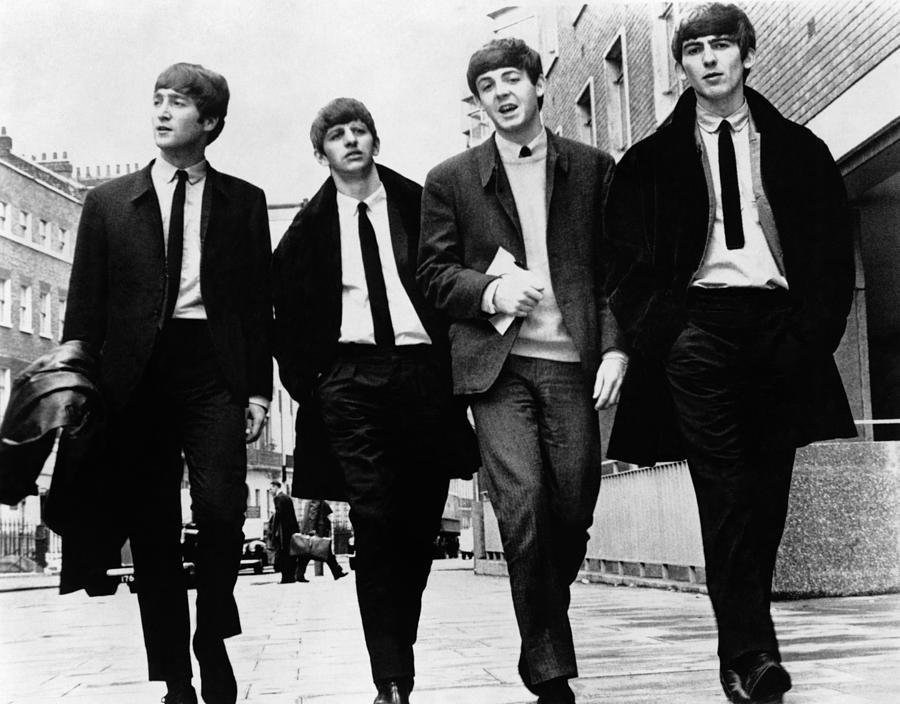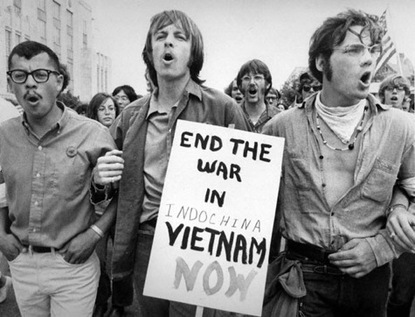Reformations in Music
A topic which was of great interest to me was the idea of music being a changing industry. Our textbook, Media & Culture: Mass Communication in a Digital Age, provides us with a chapter entitled “Sound Recording and Popular Music.” This chapter provides insight into the reformations in popular music which involved the British invasion, Motown music, folk and psychedelic music, punk, grunge and alternative music, and hip hop and pop music. I chose this topic because music is such an important form of art, and since the 1960s, different types of music have brought about change politically, socially, and in the way music is made.
A topic which was of great interest to me was the idea of music being a changing industry. Our textbook, Media & Culture: Mass Communication in a Digital Age, provides us with a chapter entitled “Sound Recording and Popular Music.” This chapter provides insight into the reformations in popular music which involved the British invasion, Motown music, folk and psychedelic music, punk, grunge and alternative music, and hip hop and pop music. I chose this topic because music is such an important form of art, and since the 1960s, different types of music have brought about change politically, socially, and in the way music is made.
The British invasion began when bands such as the Beatles
and the Rolling Stones came to America and changed the face of music. Rock was
officially formed and as Campbell states, “On the one hand, the Rolling Stones
would influence generations of musicians emphasizing gritty, chord-driven,
high-volume rock, including bands in the glam rock, hard rock, punk, heavy
metal, and grunge genres. On the other hand, the Beatles would influence
countless artists interested in a more accessible, melodic, and softer sound,
in genres such as pop-rock, power-pop, new wave, and alternative rock” (133). The
British invasion, which began in the 1960s, set the standard for future
musicians.
 |
| From: http://www.thechangeblog.com/wp-content/uploads/2014/07/reinventing-yourself.jpg This is a picture of the British band, the Beatles. The Beatles were part of the British invasion and they greatly contributed to changing the face of rock. |
Motown music, also known as “Motor City Music”, was of
particular interest to me because when my family and I went to Detroit, we were
able to see the Motown recording studio where the Motown songs were recorded. Motown,
as Campbell states, was “The most prominent independent label that nourished soul
and black popular music…” (136). I remember from my visit to the Motown museum
that the Motown music scene increased the strides towards racial equality. All
people began to realize that they shared a love for good music and as Campbell
tells us, “…black singers like James Brown, Aretha Franklin, Otis Redding, Ike
and Tina Turner, and Wilson Pickett found large and diverse audiences” (136).
 |
| From: http://www.google.com/imgres?imgurl=&imgrefurl=http%3A%2F%2Fwww.northernsoultrain.webspace.virginmedia.com%2Fartists%25201%2Fbrenda%2520holloway.html&h=0&w=0&tbnid=o9wx9TxescEetM&zoom=1&tbnh=194&tbnw=259&docid=n7EKPKZY-HHKpM&tbm=isch&ei=E3M-VILhHIPt8AGY4YDQCA&ved=0CAQQsCUoAA A picture of the studio in Detroit where Motown music was made. |
 |
| From: http://cps-static.rovicorp.com/3/JPG_400/MI0003/554/MI0003554780.jpg?partner=allrovi.com This is a picture of one of the Motown groups, The Four Tops. |
Folk and psychedelic music represented the turbulent
times which came along with the 1960s. Many of the songs which were popular during
this time brought attention to the cry for peace and social justice. Many songs
expressed people’s disdain toward the Vietnam War. Folk music inspired protests
which were in response to what was going on politically. Bob Dylan is
considered to be the most influential and well known folk performer. The psychedelic
aspect of music included the heavy use of drugs, especially LSD. Many bands
such as the Doors and the Grateful Dead claimed “artistic expression could be
enhanced by mind-altering drugs” (138). This related to social change because the
idea of wanting free speech was prevalent during this time period and the use
of drugs was viewed by many people (not just bands but also people who listened
to psychedelic bands) as a way to express oneself. Another example of social change
resulting from psychedelic music came from the negative events which happened
when psychedelic music was at its prime. One of these events included the
killings done by the Manson “family”. As Campbell states, these killings “cast
a negative light on hippies, drug use, and psychedelic culture” (139).
| From: http://upload.wikimedia.org/wikipedia/commons/6/60/Doors_electra_publicity_photo.JPG The Doors, a popular psychedelic band. |
 |
| From:http://vietnamawbb.weebly.com/uploads/5/7/2/0/5720494/858846228.jpg?417 Many psychedelic and folk songs inspired protest against the war in Vietnam. |
In the 1970s, punk rock came along and challenged the mainstream,
commercial songs with a sense of rebelliousness. Although punk music was not a commercial
success in America, it brought about social change because it allowed women like
Joan Jett and Patti Smith to be cast into the spotlight. Grunge music emerged
in the 1990s with the primary grunge band being Nirvana. Unlike punk music,
grunge was able to reach commercial success. Campbell states, “In some critical
circles, both punk and grunge are considered subcategories or fringe movements
of alternative rock. This vague label describes many types of experimental rock
music that offered a departure from the theatrics and staged extravaganzas of 1970s
glam rock…” (140). The alternative scene allowed for a shift to be made in
music.
 |
| From: http://promfih.com/data_images/main/joan-jett/joan-jett-02.jpg A picture of Joan Jett, a popular female punk rocker. |
 |
| From: http://assets.rollingstone.com/assets/images/list/d712af824fd4a08958194370346bc8fc4601dc22.jpg A picture of one of Green Day's albums. Green Day is a grunge band that followed in the steps of the band Nirvana. |
Hip hop (a type of music which involves rapping) brought
about social change through the emergence of black artists. Campbell states, “Similar
to punk’s opposition to commercial rock, hip-hop music stood in direct
opposition to the polished, professional, and often less political world of
soul” (140). Hip hop music used its rap lyrics to make political opinions
heard. Additionally, on the negative side, some hip hop music allowed for
offensive statements to be made about women and homosexuals and the increase in
gang activity in 1996 was blamed on gangster rap. This has led the form of hip
hop being produced today to be a more danceable kind of music that has strayed
away from gangster rap. Today, after first going through a significant decline
in popularity, pop music has reemerged with help from iTunes and is now what
generally sells the most.
 |
| From: http://i5.tagstat.com/p1/p/3QGquGsvV5uoygVct81r-uE6tVNcSQD4oR6F1MyYOoo=.jpg This picture represents the fact that rap music can carry lyrics which are trying to convey a message. |
 |
| From: http://www.celebzz.com/wp-content/uploads/2013/10/katy-perry-performing-at-prism-iheartradio-theatre_6.jpg A picture of Katy Perry, one of today's most popular and successful pop artists. |
This section of chapter 4 has helped me to observe the
reformations which have occurred in music. Different types of music have
brought about political and social change. Additionally, the style of music is
constantly changing and it is interesting to question what new style will
emerge next.